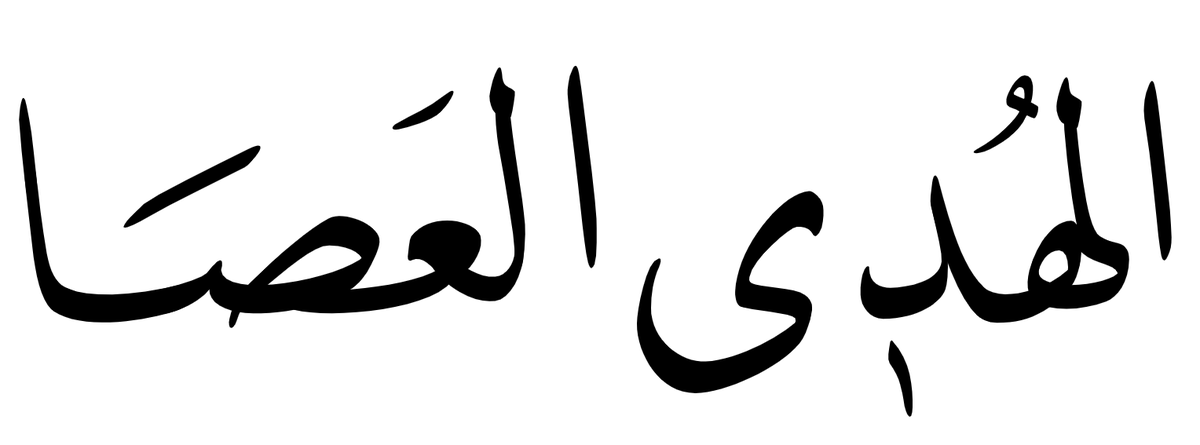
Leafing through al-Zamaḫšarī's al-Mufaṣṣal fī al-Naḥw today, I ran into his chapter on ʾibdāl "replacement", namely his section on the replacement with tāʾ of the consonants wāw, yāʾ, sīn, ṣād and bāʾ. This leads to interesting reflections on Arabic grammatical theory. 🧵 

Most of Arabic morpho-phonological theory deals with a concept known as ʾaṣl "root, origin", which is an abstract underlying representation of a word. It has similarities both to a phonemic underlying form, and etymological origin, but is neither exactly.
Rather, it is more of a Platonic ideal representation of an underlying form. The 'source' form from which the surface form (or forms) can be derived through a set of rational rules (ideally). For example, the ʾaṣl of the verb qāla 'he said' is {QaWaLa}.
In the most abstract of modern theoretical phonological theories, one might argue for this as the underlying form, but most would consider the synchronic form to be /qāla/ or /qaAla/. Indeed, Zamaḫšarī tells us that the wāw and yāʾ undergo ʾibdāl to ʾalif in this situation:
"The replacement (to alif) of the two sisters (wāw and yāʾ) is regular, for example, for qāla {QaWaLa}, bāʿa {BaYaʕa}, daʿā {DaʕaWa}, ramā {RaMaYa}, bāb {BaWaB}, nāb {NaYaB} whenever (wāw & yāʾ) carry a vowel and there is a letter carrying a fatḥah before them." 

In this same chapter he also discusses the replacement of wāw and yāʾ by tāʾ, citing examples like ittaʿada "come to an understanding" ittasara "become easy", the iftaʿala form of the verb waʿada "to promise", yasira "become easy", understanding this as {WTaʕaDa} and {YTaSaRa}.
The idealized underlying forms often turn out to be the identical to the proto-Arabic forms, as is the case with *qawala 'to say', and *ramaya 'to throw', and it can be tempting to understand ʾaṣl "origin" as "etymology". But the grammarians are very strictly non-historical.
This becomes clear in Zamaḫšarī's discussion of the "replacement" of ṣād and sīn by tāʾ as examples of this he cites ṭast with ʾaṣl {ṬaSS} "a kind of brass vessel", and liṣt {LiṢṢ} "robber". In both cases we are dealing with loanwords so we know the tāʾ is original.
liṣt "robber" is transparently from Greek λῃστής /lēistēs/ "robber". In the Old Arabic as found in the Safaitic inscriptions we also evidence for this original t-pronunciation (though with ṭāʾ, not tāʾ!). 



ṭast seems to be borrowed Middle Persian tašt, still around in modern Persian طشت, تشت "bowl"
en.wiktionary.org/wiki/%D8%B7%D8…
In other words, in both cases we are dealing with an ancient assimilation st, ṣt > ss, ṣṣ, yet Zamaḫšarī decided to treat the assimilated form as the ʾaṣl.
en.wiktionary.org/wiki/%D8%B7%D8…
In other words, in both cases we are dealing with an ancient assimilation st, ṣt > ss, ṣṣ, yet Zamaḫšarī decided to treat the assimilated form as the ʾaṣl.
Theoretically this is a little surprising: a shift of ss, ṣṣ > st, ṣt is completely isolated within Arbaic. Other words that end in ss or ṣṣ do not 'replace' the second sīn and ṣād with tāʾ, so why did he opt for this analysis?
It is tempting to see a normative bent in Zamaḫšarī's choice here. Apparently he takes liṣṣ and ṭass as the normative pronunciation of these words, whereas liṣt and ṭast were more marginal (today liṣṣ is indeed standard, but ṭast/ṭašt won out instead).
A possible other or additional explanation for Zamaḫšarī preferring this rather ad hoc explanation is that assimilation of consonants in synchronic Arabic is regressive, i.e. the former consonant assimilated to the latter. Progressive assimilation is (almost?) unheard of.
In fact assimilation in the other direction, that is tṣ > ṣṣ indeed occurs in Quranic recitation, and is analysis as assimilation instead of "replacement". ʾAbū ʿAmr, Ibn ʿĀmir, Ḥamzah, al-Kisāʾī and Ḫalaf all read ḥaṣiraṣ ṣudūru-hum (for ḥaṣirat ṣudūru-hum) in Q4:90.
I hope this look into Arabic grammatical theory was interesting and helps you in reading Arabic grammatical works.
I want to stress just how amazing Zamaḫšarī's al-Mufaṣṣal is. It's succinc, and mostly a summary of Sībawayh's al-Kitāb but MUCH clearer. Recommended reading!
I want to stress just how amazing Zamaḫšarī's al-Mufaṣṣal is. It's succinc, and mostly a summary of Sībawayh's al-Kitāb but MUCH clearer. Recommended reading!
If you enjoyed this thread and want me to do more stuff like it, please consider buying me a coffee.
ko-fi.com/phdnix.
If you want to support me in a more integral way, you can become a patron on Patreon!
patreon.com/PhDniX
ko-fi.com/phdnix.
If you want to support me in a more integral way, you can become a patron on Patreon!
patreon.com/PhDniX
• • •
Missing some Tweet in this thread? You can try to
force a refresh








